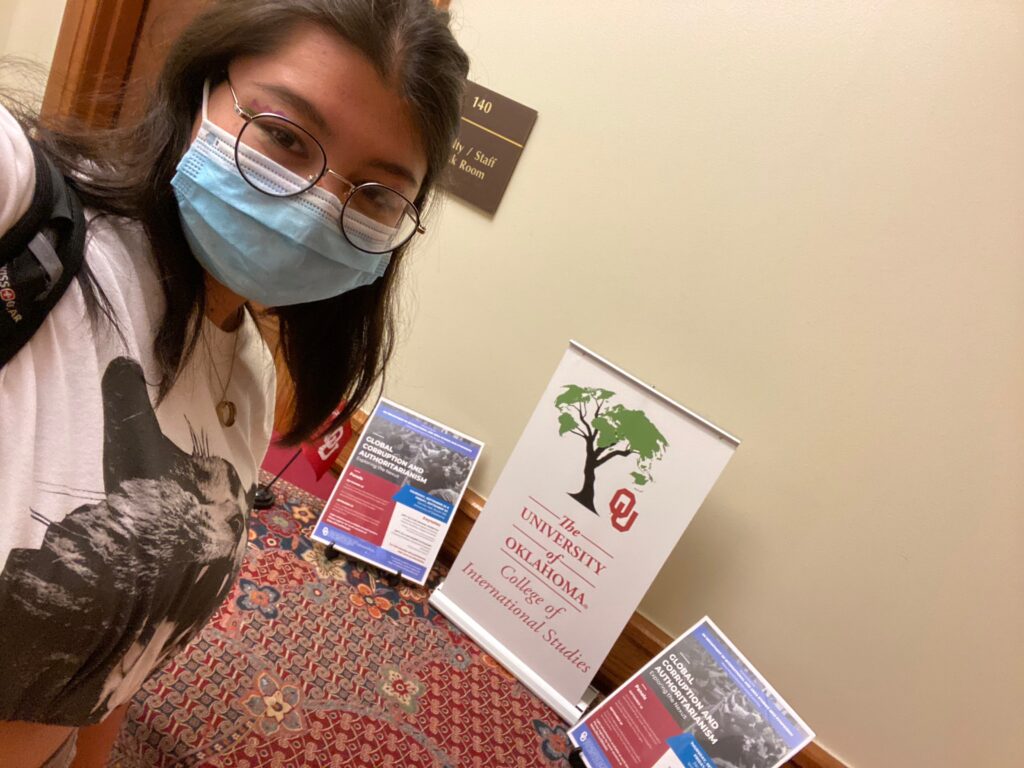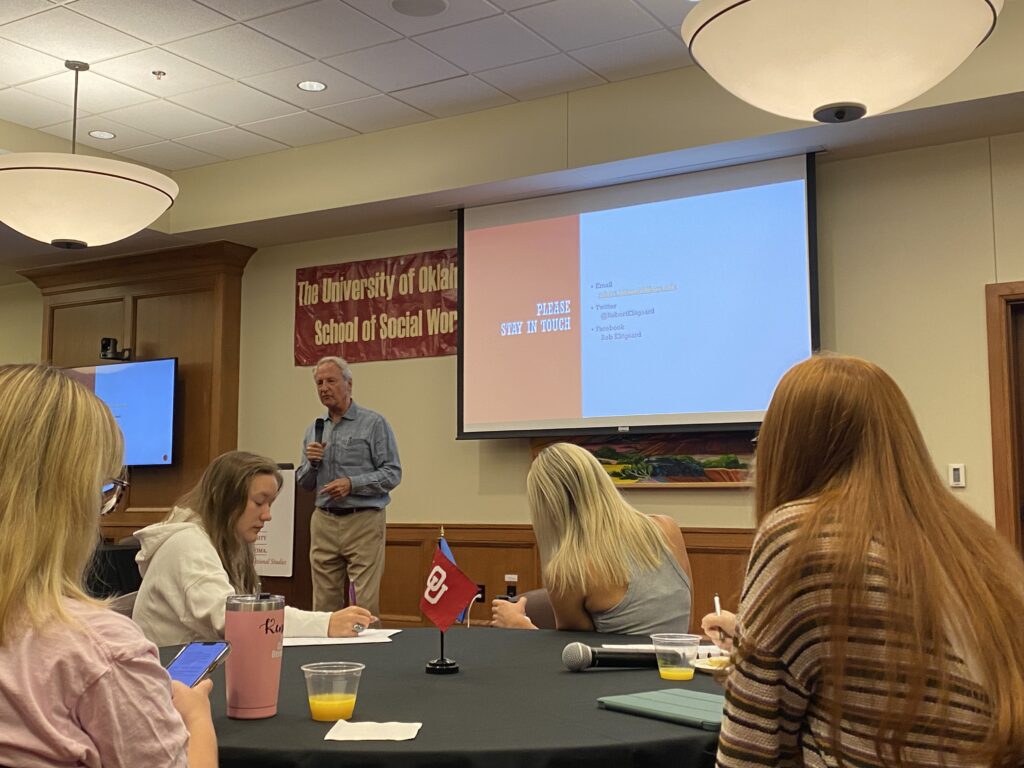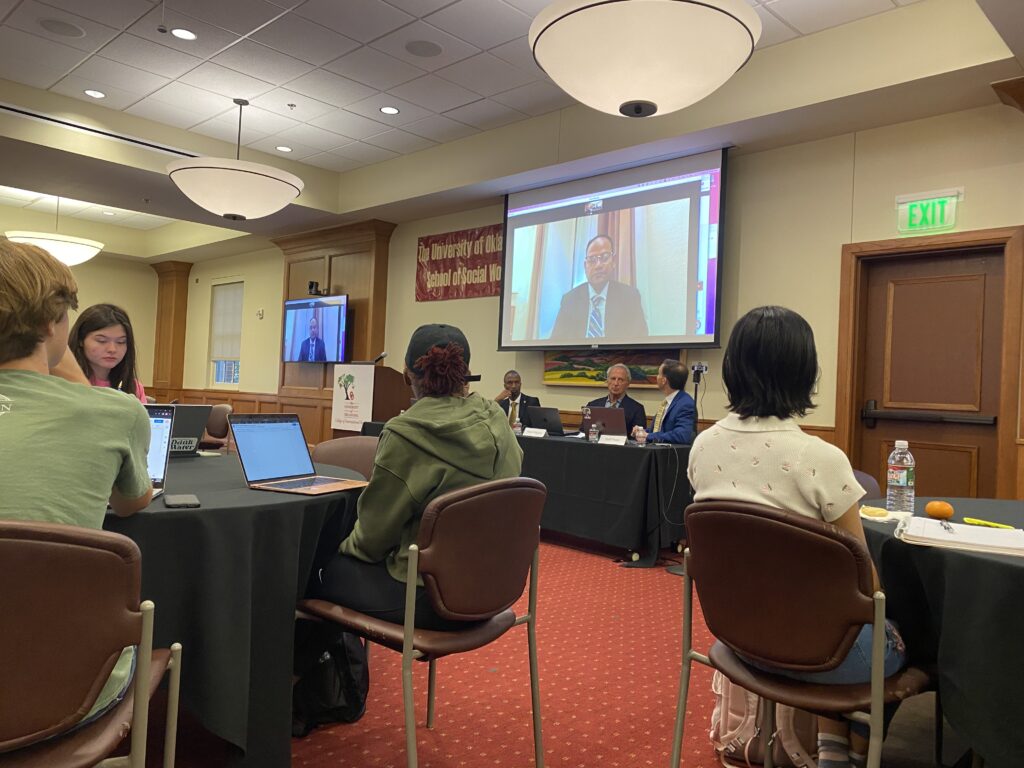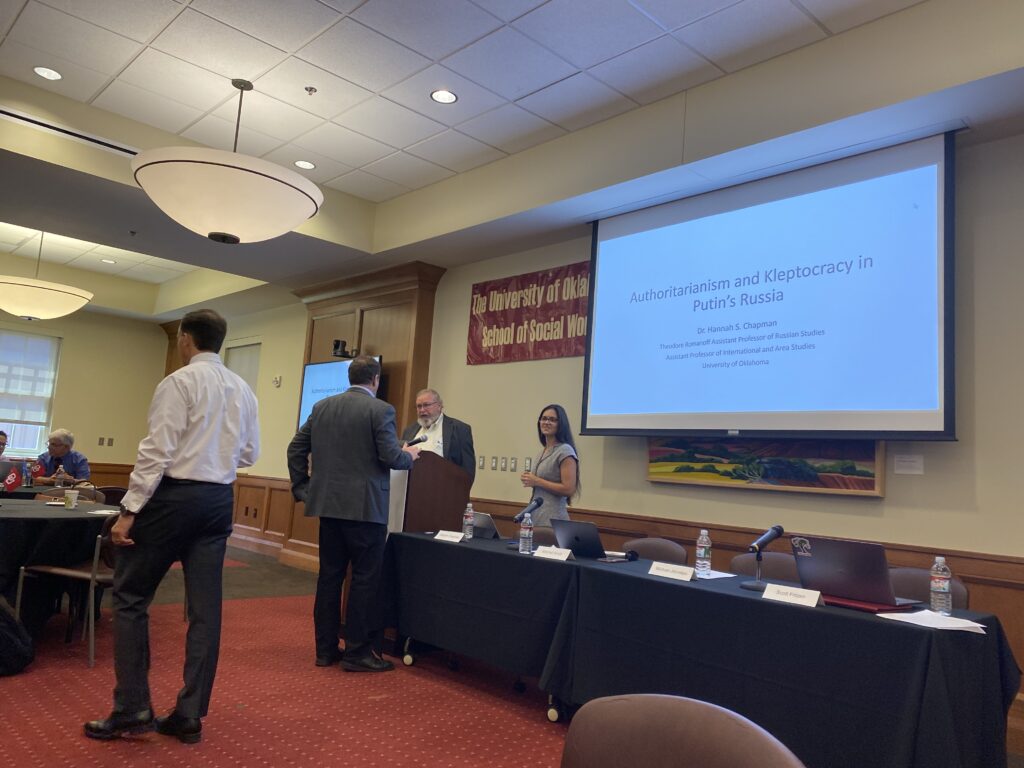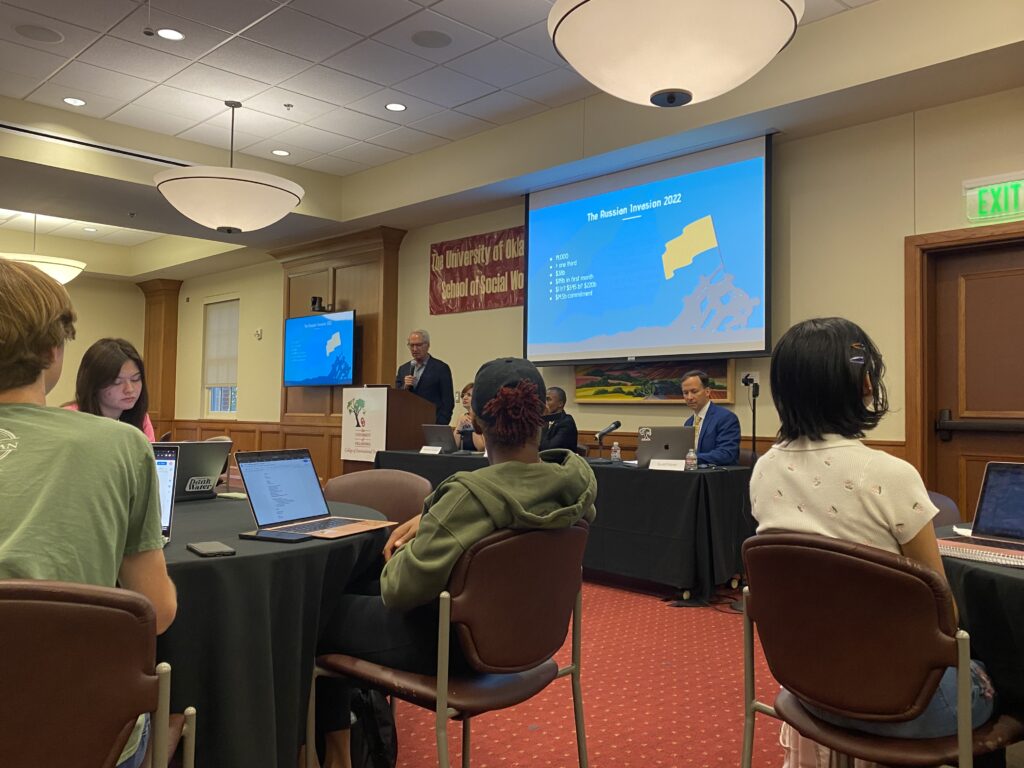From Thursday, September 22, to Friday, September 23rd, I had the opportunity to attend several lectures on Global Corruption and Authoritarianism given by expert panelists in the field of International and Area Studies. These lectures, which ranged from comparing governmental corruption in Russia, China, and Hungary- to sharing methods of challenging authoritarianism in Zimbabwe, Myanmar, and Afghanistan- to discussions from keynote speakers on cultural understandings of corruption, all brought a new perspective to the ways I thought about governance and autocracy worldwide.
Foremost, before attending these sessions, I was not aware of the sheer diversity in which authoritarianism appears across the globe. There is no one look or structure of corruption; instead, it materializes in various forms. For example, the nationalistic autocracy in Hungary- which is partially funded by the democratic UN- looks very different to the oligarchical, despotic government of Putin’s Russia.
Additionally, the lectures taught me new terms and concepts concerning government corruption. For example, the “Dictator’s Dilemma” describes the blind spots and ever-narrowing access to information a dictator subjects themselves to when they only promote yes-men.
Finally, through the multitude of lectures, I was also confronted with my preconceptions of what corruption “had to look like” within a country. To the traditional American mind, corruption looks like greedy authority figures, lying politicians, shady back-room deals, and gerrymandering. To us, a lack of public freedom is synonymous with governmental corruption. According to the speakers at the first seminar on September 22, however, some authoritarian governments (like Singapore) utilize their own centralized powers to seemingly defeat corruption. The audience and I learned that there are many different ways corruption can take shape.
Overall, I am very grateful to the speakers at the 2022 IAS Symposium for taking the time to share their wisdom, as well as to the Department of International and Area studies for hosting it. Without the symposium, my awareness of all the diverse governmental structures and symptoms of authoritarianism would still remain severely stagnated. The 2022 IAS Symposium opened my eyes to the myriad ways authoritarianism and corruption can appear and sustain across the globe.
